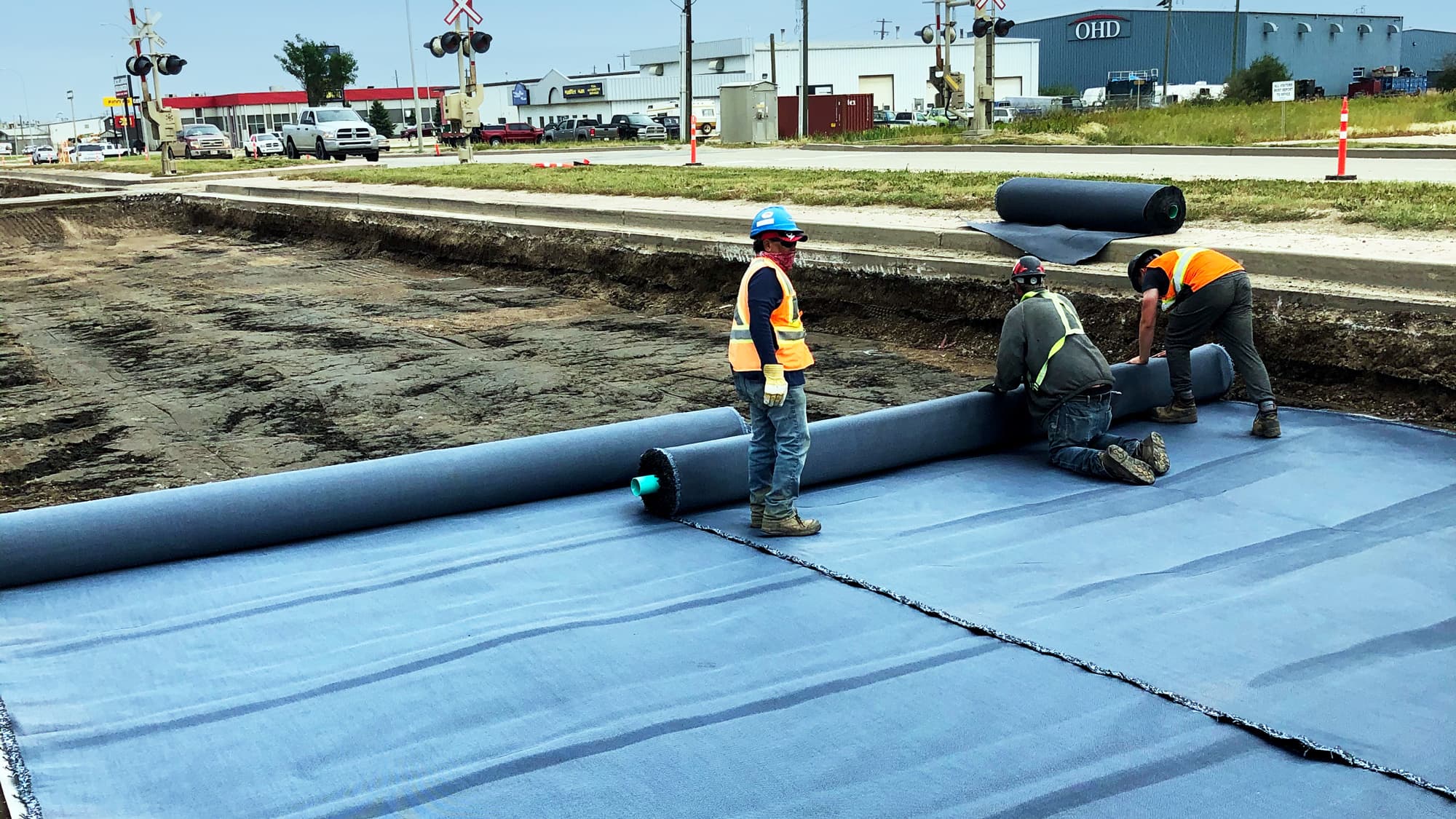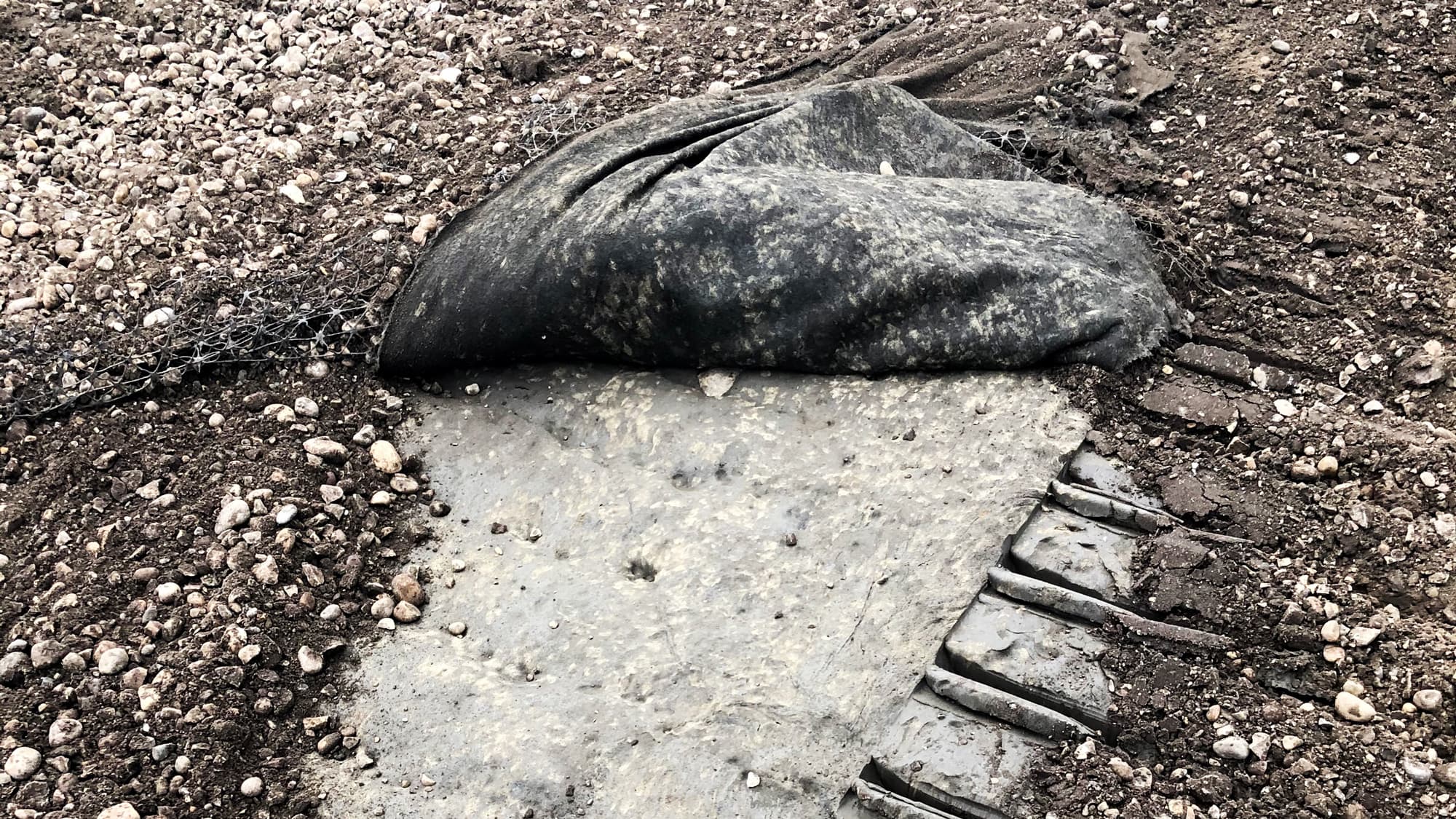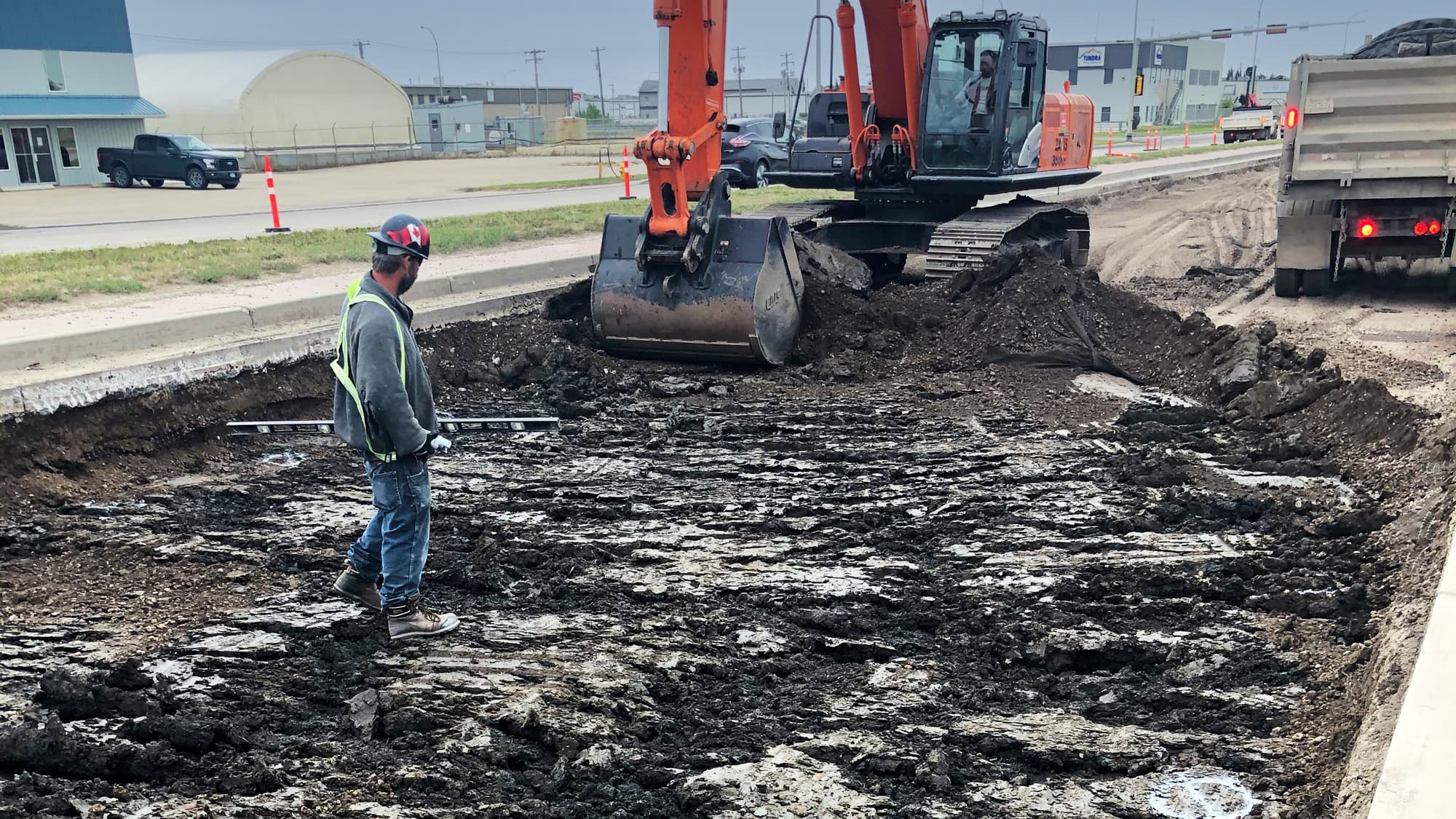Overview
The southbound lanes of 116th Avenue in Grande Prairie, Alberta, from 84th Street to 97th Street, underwent a major reconstruction in 2011 due to increased heavy traffic from new developments. To address the region’s highly plastic clay, the roadway structure had a subgrade California Bearing Ratio (CBR) of 3.0% and included both unreinforced and geogridreinforced sections. The structure was constructed to meet a 25-year pavement design target of 6.0 million Equivalent Single Axle Loads (ESALs). However, after only seven years in service, the road displayed moderate to major failures, including longitudinal and transverse cracking, block cracking, and significant rutting.
Challenge
ln 2018, Beairsto & Associates Engineering & Survey (BASE) was commissioned to design and oversee the comprehensive reconstruction of 116th Ave. The geotechnical evaluation, performed by Parkland Geotechnical Ltd., detailed the surface issues in the geogrid-reinforced roadway. Despite initial hesitations regarding the use of geosynthetic-stabilized pavement again, a Solmax presentation convinced BASE and the City to evaluate a mechanically and hydraulically stabilized pavement section that incorporated MIRAFI H₂Ri – an engineered geosynthetic. It mitigates frost heave by reducing subgrade soil moisture content and counteracts differential movement in expansive clay soils, promoting consistent expansion and contraction for enhanced road stability.
Design changes included recalculating the subgrade’s resilience modulus (MR) and setting a higher pavement design target of 9.0 million ESALs. By incorporating a single layer of MIRAFI H₂Ri in the AASHTO 93 analysis, Solmax demonstrated that the roadway’s life expectancy could be increased to over 20 million ESALs. Solmax also determined through backcalculation that a CBR as low as 1.5% could be accommodated while maintaining the minimum 9.0 million ESALs design life.
Solution
BASE and the City included MIRAFI H₂Ri in the roadway reconstruction, which broke ground in the summer of 2020. The final structure included 150 mm of asphalt concrete pavement, 650 mm of granular base course (25 mm minus), and MIRAFI H₂Ri placed on the undisturbed subgrade.
After three years of use, the road exhibits no signs of distress, which was a stark contrast to the geogrid-reinforced roadway. The inclusion of MIRAFI H₂Ri effectively mitigated challenges from the expansive and frost-susceptible soils, improving the performance and longevity of the arterial roadway. The robust evaluation, design adjustments, and strategic use of advanced geosynthetics addressed the failures of the original structure. This approach set a new benchmark for sustainable and resilient road infrastructure.


